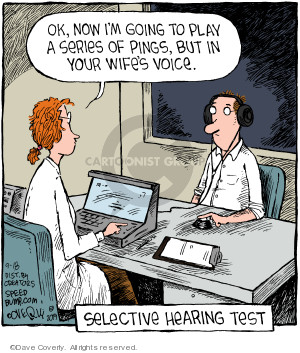- I graded your two assignments this week:
- Section 1.1: 11(de), 17(bc),
41(ac), and 48 have been randomly selected for grading.
Some comments:
- 11: The major error was folks trying to negate an
implication with an implication: an implication is very
"truthful" -- it's got three T and one F in its table. You
negate that and get something very "falseful" -- three F and
one T (like an $\land$).
- 17: No big sweat here, but you do have to be a little
careful about how you write that implication. For example, if
you write
Violets are not blue or if roses are red then sugar is sweet. no sweat (because the "if" starts an implication, completed by "sweet"; however, if you write
Violets are not blue or sugar is sweet whenever roses are red. then there's a risk of confusion: is it $V \lor (RR \longrightarrow S)$ or is it $RR \longrightarrow (V \lor S)$? The language is confusing....
That's when you rely on punctuation:
Violets are not blue, or sugar is sweet whenever roses are red.
Now you're okay! Saved by punctuation! But it's hard to hear punctuation when we're speaking something out loud; it's also hard to hear parentheses. Sometimes we don't want to hear:
- 41: Speaking of tests, your tautology tests went pretty
well. You start by asking could this implication be false? So
you assume the consequent false when the antecedent is true.
If you arrive at a contradiction, then the implication must never be false -- i.e. always true: a tautology.
So you're looking for a contradiction. Point the contradiction out explicitly when you find it.
More on this today, in section 2.1.
- 48: You need to show that you can replace $\land$ with
$\lor$ and negation; and similarly that you can replace
$\rightarrow$ with $\lor$ and negation. You can do it with
truth tables.
(Since equivalence $\leftrightarrow$ is given in terms of an $\land$ and $\rightarrow$, it's covered once we do the others.)
- 11: The major error was folks trying to negate an
implication with an implication: an implication is very
"truthful" -- it's got three T and one F in its table. You
negate that and get something very "falseful" -- three F and
one T (like an $\land$).
- Section 1.2: 12, 15, 27, 45 were
randomly selected for grading.
Some comments:
- 12: Step 6 (imp) requires invoking only step 5. It's an
equivalence between the two.
- 15: Mention the deduction method when invoking it: either
restate the theorem, or mention it when you pull the
antecedent in as an hypothesis -- so that I'll believe
that you really know what you're doing! (This, by the
way -- encouraging belief -- is what a proof sequence
is all about.)
- 27: You're trying to prove contraposition -- so you can't
use that as an argument in your proof sequence! It's
illegal to use as evidence the thing that you're trying
to prove is true.
- 45: Some of you switched up statement letters -- the author gave you letters C,F,S because that suggests to us what is being said (C - chicken; F - fish; S - salad). Using letters I,J,K (say) makes it harder to understand and harder to prove -- and it's lots harder on the grader.
- 12: Step 6 (imp) requires invoking only step 5. It's an
equivalence between the two.
If you have any issues with the grading let me know. Great job getting me the pdfs in legible formats! I am mostly interested in you trying the problems. (The answers are available on the web -- I know! I've probably seen all the answers before, copied by students in classes before you. I don't like to see answers that look like they're just copied down (e.g. from the back of the book) -- makes me feel like I'm wasting my time grading them, and I'm pretty sure that students who do it aren't really learning anything. It's always wonderful to see some interesting attack on a problem by a student; I appreciate the struggle!)
- Section 1.1: 11(de), 17(bc),
41(ac), and 48 have been randomly selected for grading.
- Keep up with the homework. Your third assignment is due today
at midnight. Email with questions, or post to the discussion.
Please save your work as a single pdf (lots easier for me to grade), and upload that to Canvas. Remember to keep the grader happy! You don't want a grumpy grader, trust me; they're not nearly as sympathetic!:)
- You have a new assignment, which will be due a week from today.
- End of next week is exam 1. More as we get closer, but this
section 2.1 is the last of the material to be covered on that exam. So
you'll have five sections, 1.1-1.4 and 2.1, to study for the exam.
- What does it mean when one says that "The domain is the whole world."? (e.g. p. 51, #13).
On a set containing all sets: Russell's paradox.

"Russell's paradox is the most famous of the logical or set-theoretical paradoxes. The paradox arises within naive set theory by considering the set of all sets that are not members of themselves. Such a set appears to be a member of itself if and only if it is not a member of itself, hence the paradox.
"Some sets, such as the set of all teacups, are not members of themselves. Other sets, such as the set of all non-teacups, are members of themselves. Call the set of all sets that are not members of themselves S. If S is a member of itself, then by definition it must not be a member of itself. Similarly, if S is not a member of itself, then by definition it must be a member of itself. Discovered by Bertrand Russell in 1901, the paradox has prompted much work in logic, set theory and the philosophy and foundations of mathematics."